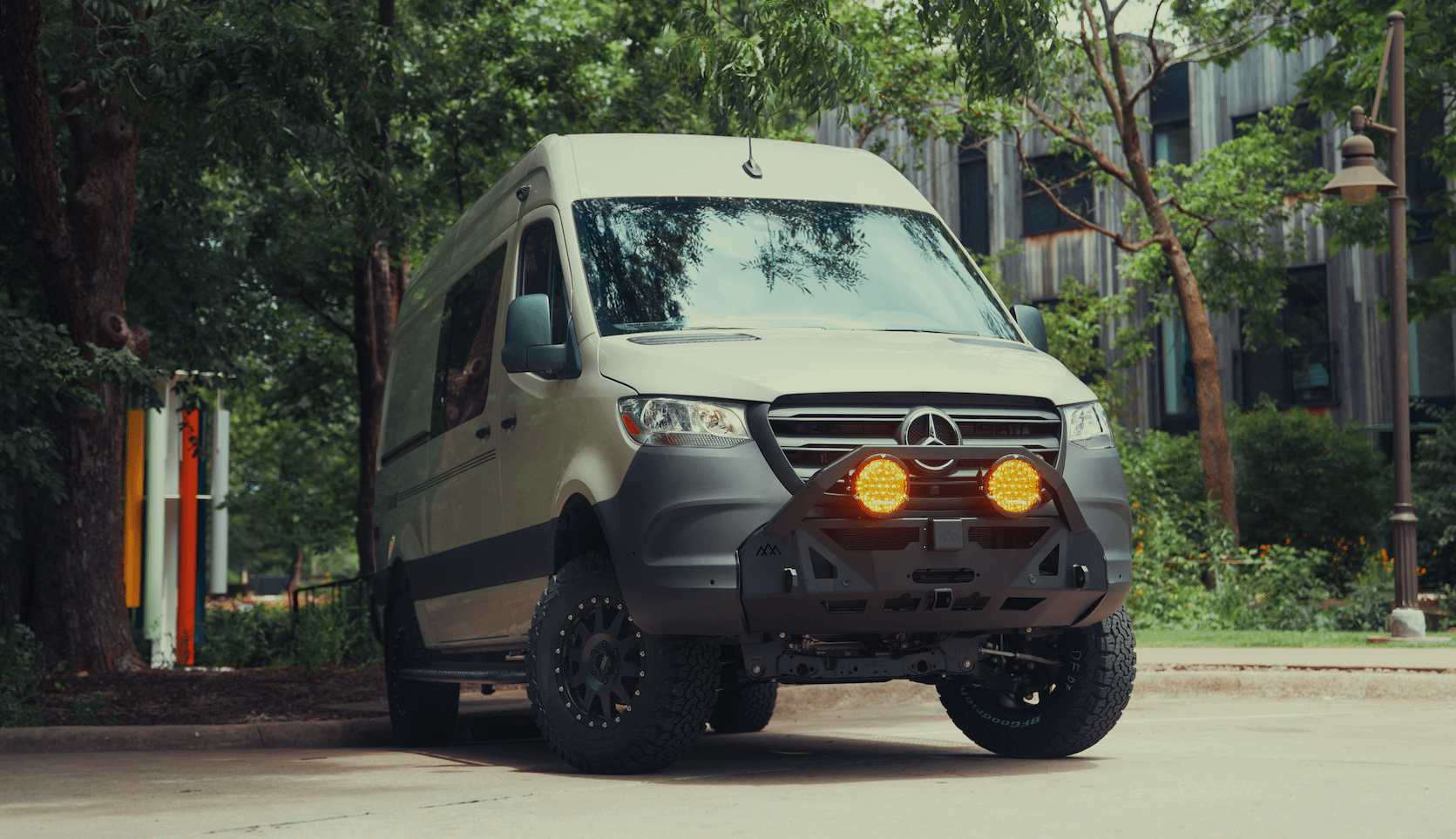Recreational Vans

Rust begins when steel reacts with oxygen and moisture, forming iron oxide. Salt, road grime, and acidic contaminants accelerate this reaction by creating an electrolyte that speeds electron exchange. Temperature swings cause condensation inside cavities and seam overlaps, feeding corrosion from the inside out. Once oxide forms, the rough surface traps more moisture and debris, which fuels further breakdown.
Moisture hides in pinch welds, overlapped seams, and foam filled sections. On the underside, chipped coatings around stone strikes become starting points. Rust progresses from surface staining to scale rust that flakes and undermines thickness. If left unchecked, perforation can develop, weakening structure and safety.
Early detection is key. A light tap test with a pick and hammer can reveal soft metal. Infrared thermography and borescope cameras help find hidden moisture and delamination inside panels and frames.
Effective rust remediation starts with a thorough wash, degrease, and decontamination to remove salts and oils. Mechanical methods like sanding, needle scaling, wire wheels, and media blasting remove oxides and expose solid metal. Chemical rust converters that use tannic or phosphoric acid can stabilize light pitting but are not a cure for heavy scale. Structural repair requires cutting back to clean steel and welding in new metal.
When patching, the strongest solution is to replace affected sections with properly formed steel that matches the original thickness and geometry. Butt welds with minimal gaps reduce overlap traps. After welding, grind smooth, metal finish as needed, and verify heat affected zones are free of remaining scale.
Seam sealer belongs over epoxy primer at joints to keep water out of overlaps and pinch seams. On the underside, use a corrosion resistant epoxy base, then apply a durable topcoat and cavity wax inside rails and box sections. Rubberized undercoats alone can trap moisture if applied to contaminated or active rust, so build the system from clean steel upward.
Prevention starts with design awareness and routine maintenance. Ensure drains are open, grommets are sealed, and water cannot pool in step wells or along roof edges. Use corrosion resistant fasteners where possible and isolate dissimilar metals to avoid galvanic reactions. For vehicles exposed to brine, rinse the underbody regularly during the season and perform deep cleaning after.
Care matters after remediation. Inspect seasonal rust hot spots, touch up chips immediately, and keep wheel wells and sills free of packed mud. Ventilation reduces condensation behind interior wall panels and insulation. In storage, keep humidity in check to slow oxidation in hidden cavities.
A practical rust remediation workflow looks like this:
Severity drives the decision to repair or replace panels. Cosmetic rust at the surface can be corrected without cutting. Structural rust at spring mounts, seat mounts, and frame rails demands thorough metal replacement and verification of alignment and thickness. The goal is not only appearance but restored function and lifespan.
When you want lasting results, process discipline matters. That means clean prep, correct metal thickness, controlled heat during welding, and coating systems applied at proper film builds. Good remediation also considers the vehicle’s mission. A daily driver in a mild climate needs a different coating stack than a long distance travel rig that sees winter mountain passes.
In Fayetteville Arkansas, a central location with varied weather, we see a mix of moisture exposure and road grit. Addressing both underside protection and upper body seams gives the best result. Routine follow ups help spot new chips, seal seam shrinkage, and maintain cavity protection over time.
For van and truck platforms that need corrosion correction before or during a build, OZK Customs applies the same attention we give to metal fabrication and fitment. We start with inspection, then remove damaged steel and craft replacement sections that match the original structure. Our team seals seams properly, lays down epoxy systems, and finishes with durable coatings suited to your travel plans.
If you are planning a cabin layout, electrical integration, or suspension upgrades, handling rust first preserves your investment and protects the new components. Whether you bring a fresh platform or a seasoned traveler, we can evaluate the shell, repair critical areas, and prepare it for reliable miles ahead.
Explore our build pathways and see how corrosion control fits into the overall plan:
Rust does not pause. If you see bubbling paint, flaky seams, or soft spots on the floor pan, it is time for a proper assessment. OZK Customs can diagnose, repair, and protect your metal so your rig is ready for the roads and trails ahead. Share your platform details, photos, and goals, and we will craft a clear path from remediation to build ready.
Contact us to schedule your evaluation and get a rust remediation plan that fits your vehicle and timeline.
Ready to stop rust in its tracks and protect your build for the long haul? Book a rust and body evaluation with OZK Customs in Fayetteville. Our team inspects, repairs, and protects metal the right way using proven fabrication and coating processes. Tell us about your platform and goals, and we will map a plan that fits your timeline and budget. Start your rust remediation consult now.
ADDRESS:
6159 E Huntsville Rd, Fayetteville, AR 72701
PHONE:
(479) 326-9200
EMAIL:
info@ozkvans.com